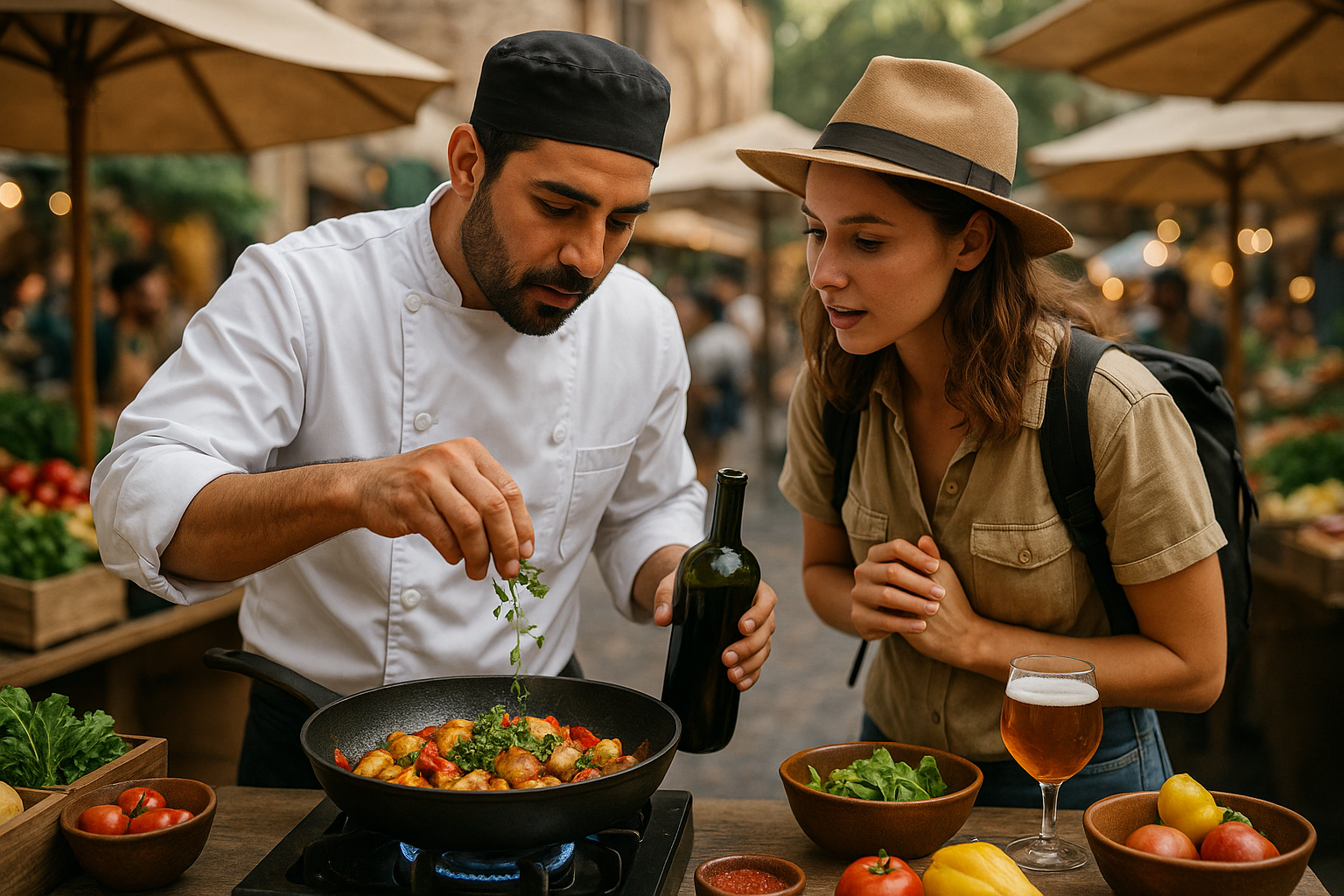Unraveling the Allure of Culinary Tourism: A Journey Through Flavors and Cultures
As the world becomes an increasingly accessible place, travelers are seeking out authentic and immersive experiences that extend beyond the traditional sightseeing. One such trend making waves in the travel industry is culinary tourism. This gastronomic movement is not merely about dining out, but about diving deep into the heart of a culture through its food. In this article, we'll explore the rise of culinary tourism, its impact on the travel landscape, and how it offers an enriching and palate-pleasing travel experience.

The Emergence of Culinary Tourism
Culinary tourism emerged from the desire of travelers to connect more intimately with their destination’s culture. Instead of passively consuming foreign dishes, culinary tourists actively participate in the food preparation process, learn about the local ingredients, and understand the historical and societal significance of the dishes they are creating or consuming. This immersive approach towards food has transformed the way we perceive travel and brought cultural interaction and education to the forefront.
Current Trends in Culinary Tourism
As culinary tourism gains momentum, various trends have emerged. From farm-to-table dining experiences where travelers visit local farms and prepare meals using fresh ingredients, to street food tours that provide an authentic taste of local flavors, culinary tourism is all about immersion and exploration. Cooking classes, food festivals, wine, and craft beer tours are also popular activities that fall under this category.
Advantages and Challenges of Culinary Tourism
Culinary tourism offers a multitude of benefits. It provides a deeper understanding of a destination’s culture, fosters connections with local communities, and caters to the growing interest in sustainable and authentic travel experiences. However, it also comes with challenges. For instance, popular food destinations may face issues of over-tourism, which can strain local resources and potentially lead to the loss of authenticity.
Culinary Tourism’s Impact on Travelers
Culinary tourism has a profound impact on travelers. It offers a sensory journey that extends beyond just taste, encompassing sight, smell, touch, and sound. It enhances the travel experience by offering opportunities for cultural exchange, learning, and personal growth.
Practical Tips for Aspiring Culinary Tourists
-
Respect Local Traditions: Understand and respect the local food customs and traditions of the place you are visiting.
-
Be Adventurous: Be open to trying new dishes, even if they seem out of your comfort zone.
-
Participate Actively: Don’t just eat. Participate in cooking classes, visit local markets, or meet with local chefs to get a deeper understanding of the cuisine.
-
Be Sustainable: Opt for local and organic food options whenever possible to support local businesses and sustainability.
In conclusion, culinary tourism is transforming the way we travel, making our journeys more immersive, flavorful, and culturally enriching. As we venture out to explore the world, our taste buds can lead us to extraordinary experiences that satiate not just our appetites but our curiosity and desire for authentic cultural interaction. So, the next time you plan a trip, consider adding a dash of culinary adventure to your itinerary. After all, the way to a culture’s heart is through its food!






